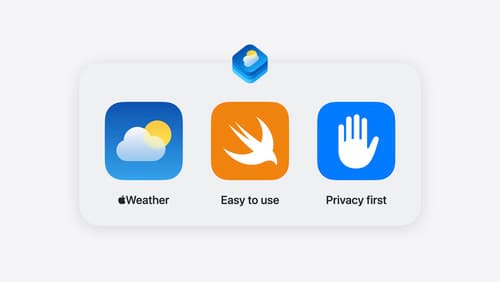How can I add weather to my app
Asked on 2024-07-30
1 search
To add weather to your app, you can use the WeatherKit API provided by Apple. Here are the steps to get started:
-
Introduction to WeatherKit:
- WeatherKit is powered by the Apple Weather service and provides accurate hyperlocal weather data through easy-to-use, privacy-first APIs. It includes both Swift and REST APIs (Bring context to today’s weather).
-
Richer Forecast Details:
- WeatherKit offers essential weather data such as current conditions, minute-by-minute precipitation, ten days worth of hourly and daily forecasts, and weather alerts. This year, it has been enhanced to include more details like cloud cover by altitude, precipitation amounts, and humidity (Bring context to today’s weather).
-
Fetching Weather Data:
- To fetch weather data, you need to specify the location, the granularity of the data (e.g., hourly), and the datasets you want to retrieve. For example, you can fetch hourly precipitation data by specifying the location and the hourly query (Bring context to today’s weather).
-
Using Swift:
- You can add an extension on
CLLocationto make it easy to refer to a specific location. Then, pass the location and the desired granularity to fetch the data. For example, to get hourly precipitation data, you can access theprecipitationAmountproperty on the hourly forecast (Bring context to today’s weather).
- You can add an extension on
-
Using REST API:
- WeatherKit APIs are hosted at
weatherkit.apple.com. You need to append parameters representing the API version, the locale, and the datasets you want to fetch. For example, to get hourly forecasts, you can specify the location and the range of hours (Bring context to today’s weather).
- WeatherKit APIs are hosted at
-
Highlighting Weather Changes:
- WeatherKit also allows you to highlight significant upcoming weather changes using the changes query. This can be used to inform users about upcoming temperature or precipitation changes (Bring context to today’s weather).
-
Historical Weather Data:
- You can fetch historical weather data using the new statistics API, which provides long-term averages and daily summaries. This can help users understand today's weather in the context of historical data (Bring context to today’s weather).
For a detailed walkthrough, you can watch the session Bring context to today’s weather from WWDC 2024.

